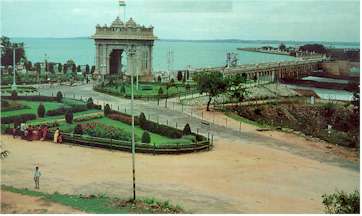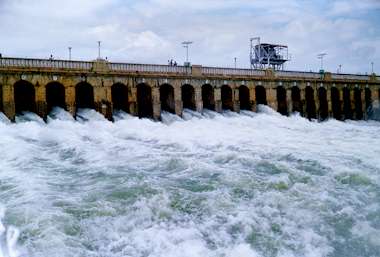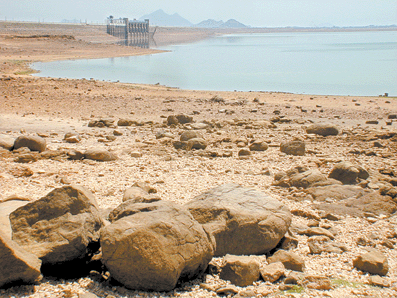BOOKS FOR YOU TO READ AND DOWNLOAD
- An Introduction to TESOL: Methods of Teaching English to Speakers of Other Languages by M. S. Thirumalai, Ph.D.
- Transformation of Natural Language into Indexing Language: Kannada - A Case Study by B. A. Sharada, Ph.D.
- How to Learn Another Language? by M.S.Thirumalai, Ph.D.
- Verbal Communication with CP Children by Shyamala Chengappa, Ph.D. and M.S.Thirumalai, Ph.D.
- Bringing Order to Linguistic Diversity - Language Planning in the British Raj by
Ranjit Singh Rangila,
M. S. Thirumalai,
and B. Mallikarjun
REFERENCE MATERIAL
- Languages of India, Census of India 1991
- The Constitution of India: Provisions Relating to Languages
- The Official Languages Act, 1963 (As Amended 1967)
BACK ISSUES
- E-mail your articles and book-length reports to thirumalai@bethfel.org or send your floppy disk (preferably in Microsoft Word) by regular mail to:
M. S. Thirumalai
6820 Auto Club Road #320
Bloomington, MN 55438 USA. - Contributors from South Asia may send their articles to
B. Mallikarjun,
Central Institute of Indian Languages,
Manasagangotri,
Mysore 570006, India or e-mail to mallik_ciil@hotmail.com. - Your articles and booklength reports should be written following the MLA, LSA, or IJDL Stylesheet.
- The Editorial Board has the right to accept, reject, or suggest modifications to the articles submitted for publication, and to make suitable stylistic adjustments. High quality, academic integrity, ethics and morals are expected from the authors and discussants.
Copyright © 2001
M. S. Thirumalai
LANGUAGE NEWS THIS MONTH
LANGUAGE LOYALTY, INDIAN DRAMA, AND ARTISTIC FREEDOM
M. S. Thirumalai, Ph.D.

1. WATER! WATER!! EVERYWHERE?
A very interesting situation has arisen with regard to a recent movie screened in Bangalore. The title of the movie is H2O, or shall we call it Water! Water!! ? The movie is allegedly a Kannada movie, but it carries the conversations in Tamil, according to some sources, almost to the extent of 40 to 45 percent of the entire movie. Some Kannada leaders have demanded that this movie, intended for the Kannada audience, should not be screened in Bangalore (and in Karnataka) unless the producers change the Tamil conversations and songs into Kannada. They have also demanded that the title of the movie should be prominently displayed in Kannada letters and Kannada words, perhaps with no titles or words in Tamil. The signboards in Tamil as well as the DMK flag displayed in the movie should be removed, they demanded.
2. THE RIVER AND THE HEARTS ON FIRE!

Honnu:r in Karnataka and Chennu:r in Tamilnadu are the locales for the story of the movie. The people in Honnu:r are shown to speak both Kannada and Tamil, whereas the people in Chennu:r always speak in Tamil, never in Kannada, according to the descriptions provided by the newspapers about the movie. The manner in which the characters portrayed in the movie, and the dialogues between the Tamils and Kannadigas, it appears, further complicate the situation and do not contribute to the delicate balance that need to be maintained! There are also charges that the heroine Kaveri in the movie is portrayed in such a poor taste that it does not do any honor to Mother Kaveri.
3. LEARNING HARD LESSONS
As the modern Indian political traditions go, a demand is always accompanied by some physical threat and ready damage to property. Some of the theaters that screened the movie in Bangalore had this costly experience.
Creative writers all over the world are learning a hard lesson for their risk taking innovations. Or should I say, they are paying a price for the "audacious" exercise of their freedom? Social responsibility and ethnic pride are very important, but, at the same time, artistic freedom should also be given some room.
4. MIXING DIALECTS AND ANCIENT INDIAN DRAMA
Mixing dialects, both social and regional, in the plays is an ancient technique adopted by Kali Dasa. Before him, Bharata Muni, in his Natya Sastra, even made this a standard practice. The character in a drama is endowed with good or bad features based on their language/dialect use. Use of certain features would communicate that the character is a good one and is to be loved. Use of some dialectal features would indicate that the character is villainous, rough, socially or professionally inferior, or even evil.
5. MIXING DIAMONDS AND CORALS - NO MORE A BEAUTY?
While this was seen to add to the relish and the reality of the play, mixing dialects or languages in deliberate writings and expositions, for example, in grammatical, literary, and theological expositions, have received serious criticism in the hands of those who would like to retain the purity of their language, and communicability of the material being transmitted by the writers. For hundreds of years, the MaNiprava:La (mix of diamonds and corals) style of mixing Sanskrit and Tamil was in fashion, but the Pure Tamil movement began to shun this mixing.
6. LINGUISTIC AND ETHNIC CARICATURES IN INDIAN CINEMA
Indian movies, like the movies from the Hollywood, always presented caricatures of ethnic, linguistic, religious, and other social groups. In the fifties and sixties, Tamil movies carried caricatures of the north Indian (Marwadi) businessmen. Movies in other south Indian languages also did the very same thing. But these caricatures mostly related to the manner in which the north Indian businessmen and women spoke Tamil or the other south Indian languages. Bombay movies did not lag behind in this caricature game, when they portrayed the "Madrasis." And such trends were somewhat in tune with the Indian traditional drama.
7. BILINGUAL INDIAN CINEMA?

The new Kannada-Tamil experiment in the H2O movie is somewhat different in the sense that two active linguistic communities with their day-to-day languages are portrayed in it, with all their political and social attitudes, prejudices, and pride. The movie is not going to set a trend of bilingual cinema any time in the near future. But it certainly affects the sentiments of its viewers, if we go by the statement issued by some Kannada leaders. In addition, the theme is rather politically charged, especially because of the continuing contention about sharing the Kaveri waters. From the brief description of the story one gets the impression that the producers of the movie tried to produce a realistic movie. But realism is never liked in the politically surcharged emotional atmosphere. The Tamils themselves may not have liked the movie if it were to portray them in poor light.
8. WHERE DID WE GO WRONG?
In other words, the success of bilingual Indian cinema (if it is going to be a genre in itself) will depend on the theme and its delicate handling. For example, a bilingual family drama, without political overtones, portraying the hope, suffering and toiling together, and the ultimate success of the members across generations, would have received greater approval than H2O with political overtones. That is, as a student of linguistics, literature, and Indian movies, I really do not think that there is anything wrong with the innovative bilingual cinema, if we can keep an eye on the comprehensibility of the story and the dialogues, and choose themes that contribute to a better understanding and the development of togetherness among the peoples with bilingual borders. Indian aesthetics for the last two thousand years or so has been supportive of this position.*** *** ***
HOME PAGE | Gojri and Its Relationship with Rajasthani, etc. | Teaching Communicative Competence in Diglossic Indian Languages | The Constitution of India: Provisions Relating to Languages | The Official Languages Act, 1963 (As Amended 1967) | An Introduction to TESOL: Teaching English to Speakers of Other Languages | CONTACT EDITOR
M. S. Thirumalai, Ph.D.
Bethany College of Missions
Bloomington, MN 55438, USA
E-mail: thirumalai@bethfel.org.